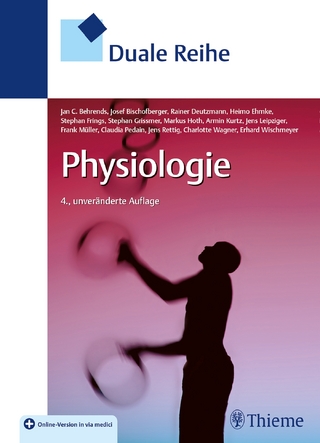
Sex Differences in Physiology
Academic Press Inc (Verlag)
978-0-12-802388-4 (ISBN)
Dr. Gretchen Neigh is currently an Associate Professor in the Department of Anatomy & Neurobiology at Virginia Commonwealth University School of Medicine. Dr. Neigh’s research uses animal models to provide insight into the role of cerebral vascular and metabolic compromise in the generation of affective and cognitive disorders. Her work focuses on periods of increased plasticity and susceptibility to insults such as adolescence and late life. The work in Dr. Neigh’s lab is multidisciplinary and attends to the interplay among the nervous, cardiovascular, endocrine, reproductive, and immune systems. In addition, her work spans multiple levels of analysis from assessment and manipulation of gene expression, to imaging in rodents, to behavioral analysis. Dr. Neigh has received funding from the National Alliance for the Study of Schizophrenia and Depression (NARSAD), the Brain and Behavior Research Foundation, the American Heart Association, the Claude Pepper Center, the National Institute of Neurological Disorders and Stroke, the National Institute for Nursing Research, the National Institute of Allergy and Infectious Disease, and the National Institute of Mental Health. In addition to her research program, Dr. Neigh serves on the Executive Committee of the Organization for the Study of Sex Difference (OSSD) and the editorial boards of Hormones & Behavior and Physiology & Behavior. More information about her work can be found at: http://gretchenneigh.wix.com/neighlab Dr. Megan Mitzelfelt has primary research interests in sex hormone regulation of epithelial transport and its role in the sex differences observed in normal physiology and disease. Most currently her research involves understanding the regulation of alveolar epithelial sodium channels by estradiol. Using cell-attached patch clamp and biochemistry, she is investigating the mechanism of estradiol’s activation of the epithelial sodium channel in a rat alveolar cell line. In future studies, she will examine how female sex hormones affect alveolar sodium channel activity in vivo using patch clamp analysis of alveolar cells from lung slices and through determination of alveolar fluid clearance in male, female, and ovariectomized rats. Finally, she will examine how estradiol’s regulation of these sodium channels contributes to the sex differences observed in cystic fibrosis and influenza through the use of mouse models of these diseases.
1. Introduction
by Virginia Miller
2. Endocrinological origins of sex, sexual differentiation, and sexual dimorphisms
by Craig Kinsley, Kelly Lambert, and Massi Bardi
3. Sex differences in neuroanatomy and neurophysiology: implications for brain function, behavior, and neuropsychiatric disease
by Gretchen Neigh and Liana Merrill
4. Sex differences in the immune system and immune function
by Sally Huber and Delisa Fairweather
5. Sex and gender differences in cardiovascular disease
by Leanne Groban, Hao Wang, Allan Alencar and Sarah Lindsey
6. Sex differences in pulmonary anatomy and physiology: implications for health and disease
by Y.S. Prakash and Venkatachalem Sathish
7. Sex differences in renal physiology and pathophysiology
by Carolyn Ecelbarger
8. Sex differences in gastrointestinal physiology and disease: from endogenous sex hormones to environmental endocrine disruptor agents
by Eric Houdeau
9. Sex and gender differences in body composition, lipid metabolism and glucose regulation
by Kelly Ethun
10. Sex hormone influenced differences in skeletal muscle responses to aging and exercise
by Peter Tiidus
11. Strategies and approaches for studying sex differences in physiology
11.1. Introduction
by Margaret McCarthy
11.2. Studying Sex Chromosome Effects that Cause Sex Differences in Non-Gonadal
Phenotypes
by Arthur Arnold
11.3. Organizational influences of the sex steroid hormones on the hypothalamic-pituitary-
adrenal (HPA) axis
by Victor Viau
11.4. Activation Methodologies
by Jill Becker
11.5. Human Methodologies in the Study of Sex Differences
by Emily Bartley and Margarete Ribeiro-Dasilva
| Verlagsort | San Diego |
|---|---|
| Sprache | englisch |
| Maße | 216 x 276 mm |
| Gewicht | 660 g |
| Themenwelt | Medizin / Pharmazie ► Medizinische Fachgebiete |
| Studium ► 1. Studienabschnitt (Vorklinik) ► Physiologie | |
| Naturwissenschaften ► Biologie | |
| ISBN-10 | 0-12-802388-0 / 0128023880 |
| ISBN-13 | 978-0-12-802388-4 / 9780128023884 |
| Zustand | Neuware |
| Informationen gemäß Produktsicherheitsverordnung (GPSR) | |
| Haben Sie eine Frage zum Produkt? |
aus dem Bereich


